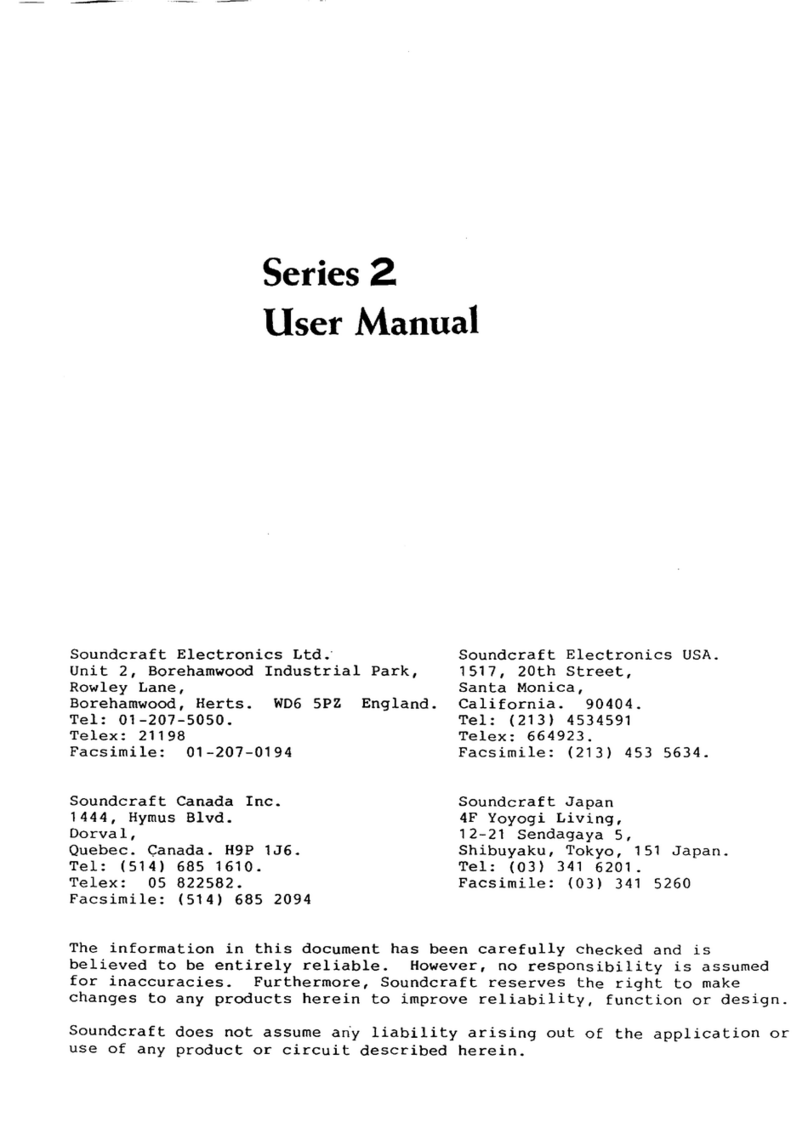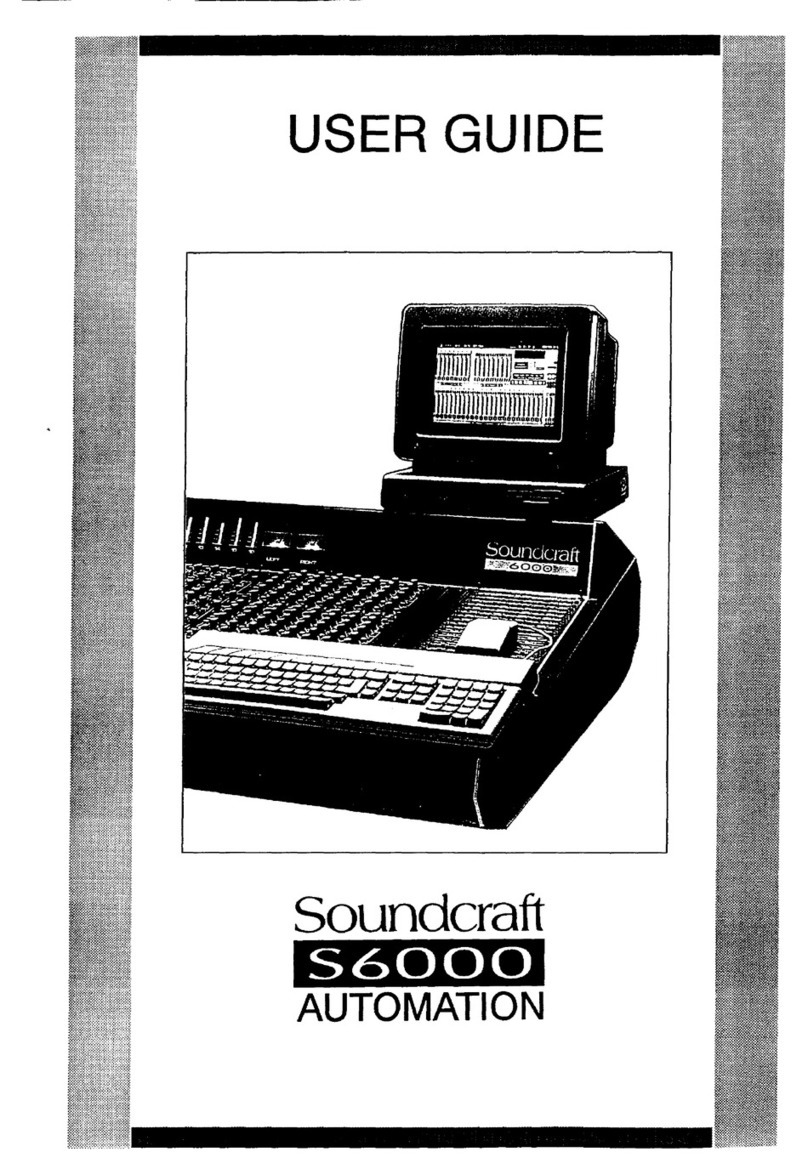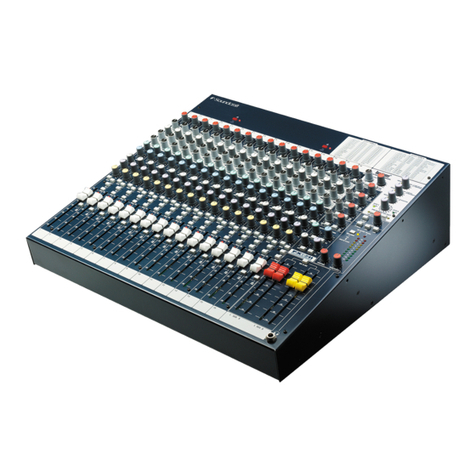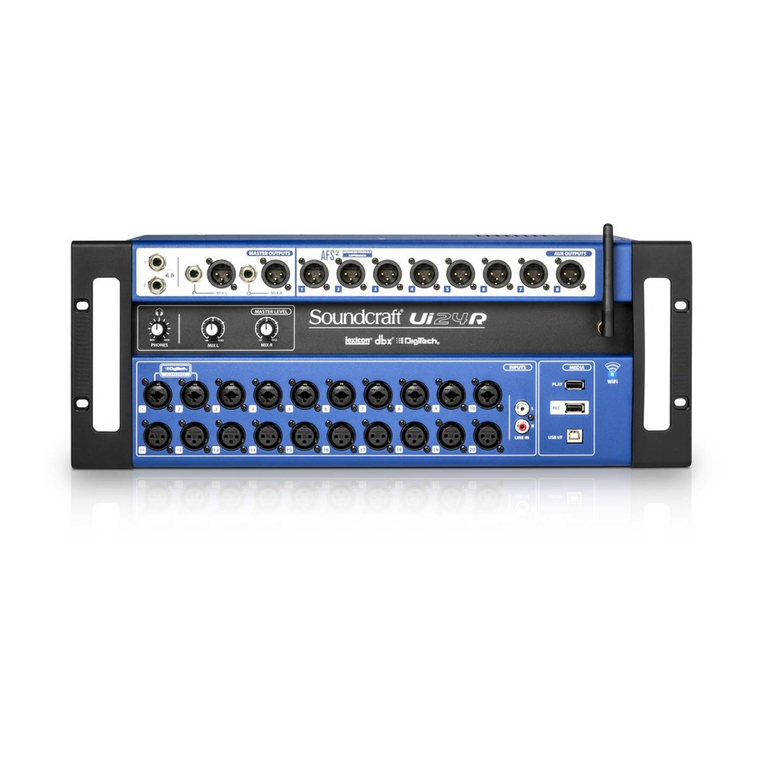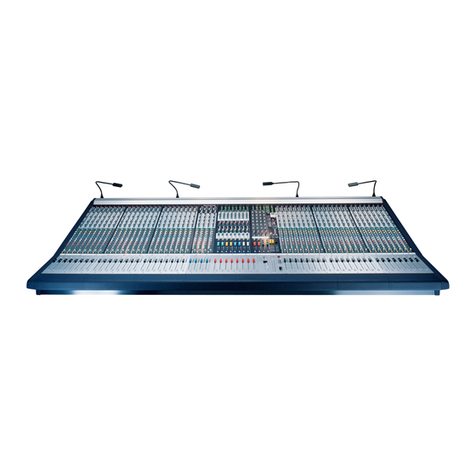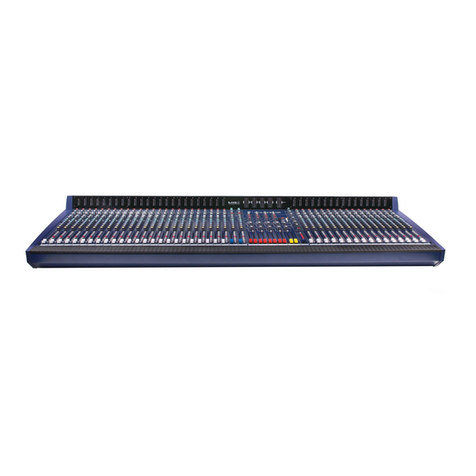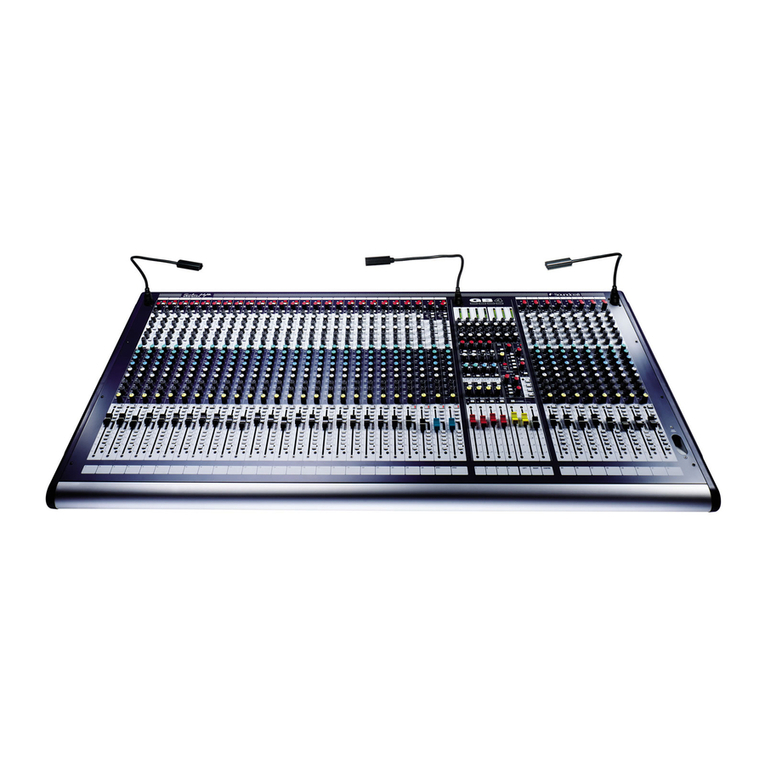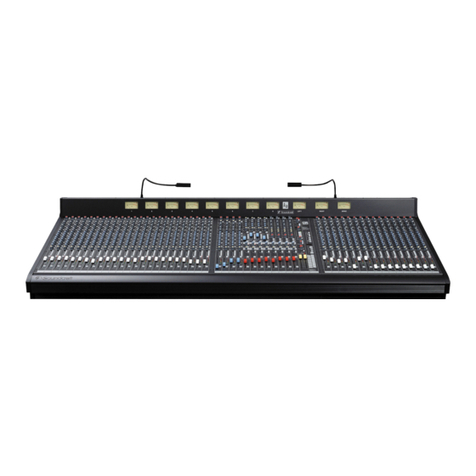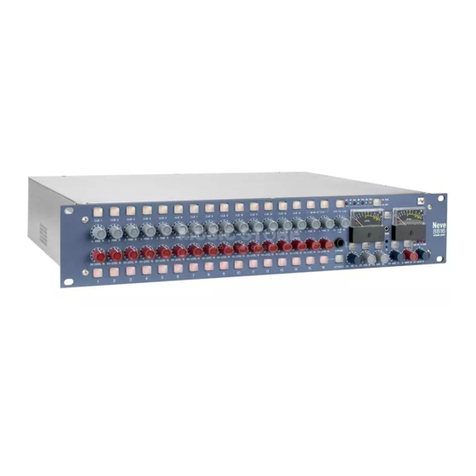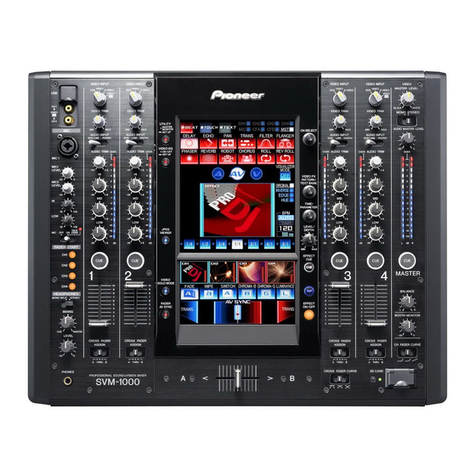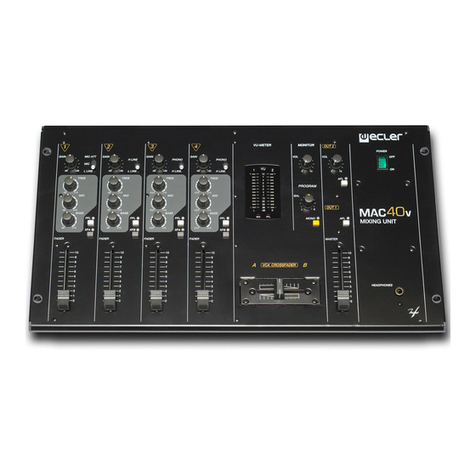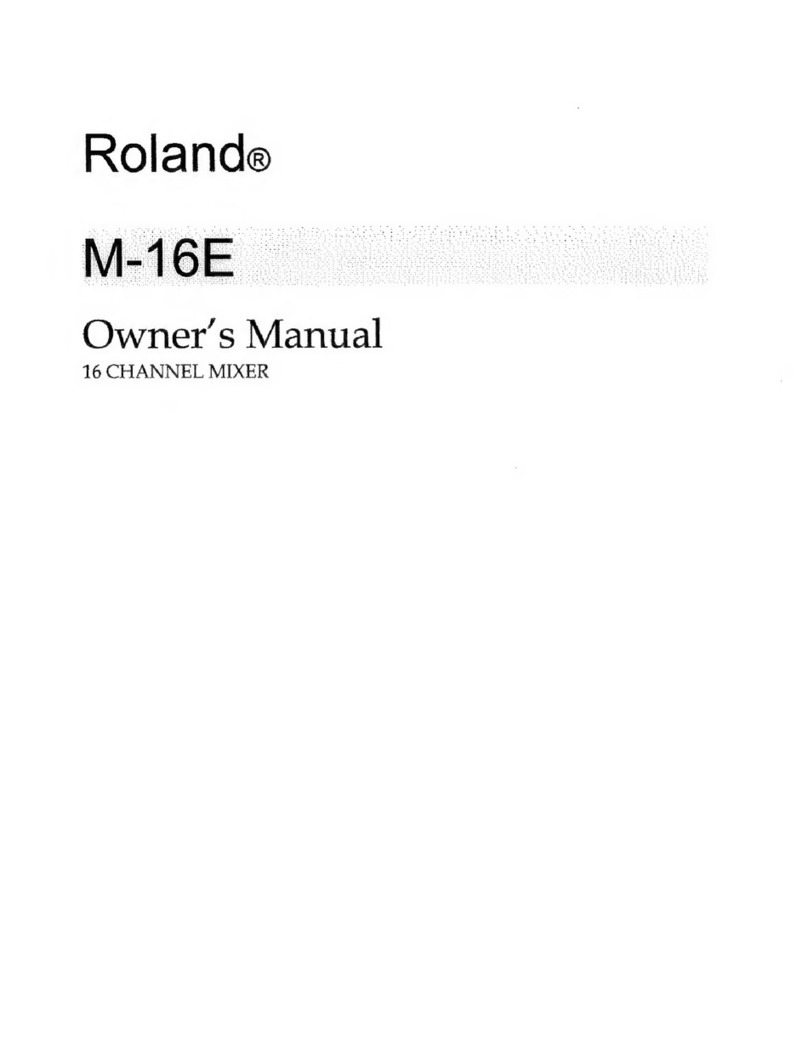USING THE FX16
Input Channel
Mic Input
The mic input accepts XLR-type connectors and is designed to suit a wide
range of BALANCED or UNBALANCED signals. Professional dynamic,
condenser or ribbon mics are best because these will be LOW
IMPEDANCE. You can use low-cost HIGH IMPEDANCE mics, but the
level of background noise will be higher. If you press the MIC 48V switch
down (top right of the master section) the XLR socket provides a suitable
powering voltage for professional condenser mics (this is also known as
Phantom Power).
ONLY connect condenser microphones with the 48V
powering OFF (switch UP), and ONLY turn the 48V
powering on or off with all output faders DOWN, to
prevent damage to the mixer or external devices.
TAKE CARE when using unbalanced sources, which
may be damaged by the phantom power voltage on
pins 2 & 3 of the XLR connector.
Unplug any mics if you want to use the LINE Input. The input level is set
using the SENS knob.
LINE INPUT
Accepts 3-pole `A gauge (TRS) jacks. Use this high impedance input for
sources other than mics, such as keyboards, drum machines, synths, tape
machines or guitars. The input is BALANCED for low noise and top quality
from professional equipment, but you can use UNBALANCED sources by
wiring up the jacks as shown, although you should then keep cable lengths
as short as possible. Unplug anything in the MIC input if you want to use
this socket. Set the input level using the SENS knob.
SENS (Sensitivity)
This knob sets how much of the source signal is sent to the rest of the
mixer. Too high, and the signal will distort as it overloads the channel. Too
low, and the level of any background hiss will be more noticeable
and you may not be able to get enough signal level to the output of
the mixer.
Setting the knob to the 10 mark gives approximately unity gain for the
LINE input. Note that some sound equipment, particularly that intended
for domestic use, operates at a lower level (-10dBV) than professional
equipment and will therefore need a higher gain setting to give the same
output level.
See `Setting Up & Troubleshooting on page 8 to learn how to set SENS
correctly.
100Hz HI-PASS FILTER
Pressing this switch activates a steep 18dB per octave filter which reduces
the level of bass frequencies only. Use this in live PA situations to clean up
the mix, reducing stage rumble or popping from microphones.
EQUALISER
The 3 band swept Equaliser (EQ) allows fine manipulation of the frequency
bands, and is particularly useful for improving the sound in live PA
applications where the original signal is often far from ideal and where slight
boosting or cutting of particular voice frequencies can dramatically improve
clarity.
HF EQ
Turn clockwise to boost high (treble) frequencies (12kHz and above) by up
to 15dB, adding crispness to cymbals, vocals and electronic instruments.
Turn anticlockwise to cut by up to 15dB, reducing hiss or excessive sibilance
which can occur with certain types of microphone. Set the knob in the
centre-detented position when not required.
MID EQ
This pair of knobs work together to form a MID frequency EQ section. The
lower knob provides 15dB of boost and cut, just like the HF EQ knob, but
the frequency at which this occurs can be set by the upper knob over a
range of 240Hz to 6kHz. This allows some truly creative improvement of
the signal in live situations, because the mid band covers the range of most
vocals. Listen carefully as you use these controls together to find how
particular characteristics of, for instance, a vocal signal can be enhanced or
reduced. Set the gain (lower) knob to the centre-detented position when
not required. Note: Q is set at 1.5.
LF EQ
Turn clockwise to boost low (bass) frequencies (60Hz and below) by up to
15dB, adding warmth to vocals or extra punch to synths, guitars and drums.
Turn anticlockwise to cut low frequencies by up to 15dB for reducing hum,
stage rumble or to improve a mushy sound. Set the knob to the centre-
detented position when not required.
AUX SENDS
These are used to set up separate mixes for FOLDBACK, EFFECTS or
recording, and the combination of each Aux Send is mixed to the respective
Aux Output at the rear of the mixer. For Effects it is useful for the signal to
fade up and down with the fader (this is called POST-FADE), but for
Foldback or Monitor feeds it is important for the send to be independent of
the fader (this is called PRE-FADE). All Aux Sends are muted with the other
channel outputs when the MUTE switch is pressed.
Aux 1 is always PRE-FADE, POST EQ, and would typically be used as a
foldback or monitor feed. Aux 2 & 3 are normally POST-FADE, POST-EQ
for use as effects sends or additional submixes, but for flexibility Aux 2 may
be switched to PRE-FADE, POST-EQ by pressing the associated PRE
switch.
LEX FX
The LEX FX control is identical to the post-fade Aux 3, but the signal is sent
to the internal bus which feeds the input of the built-in LEXICON digital
effects processor. The output of the LEXICON processor may be added to
the Mix or Aux 1 or 2. The further round the dial the more channel signal
you send to the Lexicon effects unit.
